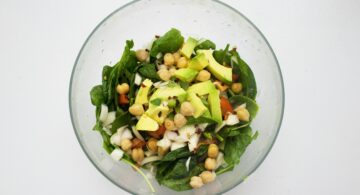The Hair-Raising Benefits of Asparagus
Many have thought over time that Prince Harry eats asparagus to fix a balding problem he inherited from his father. And, those linking Harry’s eating habits to hair growth are onto something—kind of.
Asparagus has a variety of health benefits, one of which is its high alkaline levels. While we know that high alkaline foods help your body maintain a balanced pH, its part in stimulating hair growth is still up for debate.
So, while we can’t speak for the prince’s diet, we can speak for the power of asparagus, which is an excellent addition to your diet. Here’s why.
Asparagus Benefits
Asparagus belongs to the lily family, and is related to garlic, leeks and onions, all of which have their share of benefits, as well. So, it’s no surprise that this vegetable is also integral to a healthy diet. Here’s what your body gets when you clean a plate of asparagus.
Vitamin K
Vitamin K helps your body produce clotting factors that are essential to healthy blood clotting. It’s also a critical component in bone strength.
Antioxidants
Asparagus sits high on the list of vegetables that neutralize cell-damaging free radicals. What does this translate to? Great anti-aging benefits.
Glutathione
This is a detoxifying compound that works to break down carcinogens, along with other toxic compounds. It’s believed that these toxic compounds, or free radicals, can cause cancer. Because of this, many health professionals believe that asparagus can help lower your risk of contracting it.
B Vitamins
Asparagus is rich in B vitamins, which are critical to a variety of bodily functions including blood sugar regulation. It’s highest in B6 and B12. Those two vitamins, combined with high folate levels, lower the levels of homocysteine in your body. This translates to a reduced risk of heart disease, according to Liz Applegate, Ph. D., of Runner’s World.
Better Nutrient Digestion
Asparagus is full of inulin, which health professionals refer to simply as a “prebiotic.” Though it’s a carb, also found in Jerusalem artichokes, it doesn’t get broken down in the first part of the digestive tract. When it arrives undigested in the large intestine it’s eaten by bifidobacteria and lactobacilli, both of which are integral in better nutrient absorption.
Choose the Right Asparagus
Now that you’re ready to eat your fair share of asparagus, you may need some cooking tips and ideas. First, there are three types of asparagus—green, purple and white—and not all of them should be treated equally.
- Green asparagus is considered the most nutritious because it contains potassium, folic acid, beta-carotene and Vitamin C.
- White asparagus has all these benefits but lacks the chlorophyll, which lowers it’s nutritional content slightly. It’s also more delicate to cook.
- Purple asparagus also has all the same benefits, but has higher sugar content. It’s sweeter, and has a nutty flavor, when cooked.
When choosing at the grocery store, go for a bundle that has firm, rounded stalks and closed tips. A small amount of woodiness, or whiteness, at the bottom of the stalk is normal, but you don’t want too much.
3 Quick Asparagus Recipes
Breakfast
Boil it, for 5 minutes or less so the nutrients don’t leech out into the water. Serve with poached eggs and a side of spouted grain toast
Lunch
Steam asparagus in the microwave at work, (put your chopped asparagus in a bowl with water and cover it with a towel; cook for 2 minutes and drain the water) top it with olive oil and vinegar, and eat it with grilled chicken.
Dinner
Stir-fry chopped asparagus with broccoli, mushrooms, garlic, salt and pepper and eat it with rice and a protein.
Whether you eat it at breakfast or as a snack after lunch, asparagus’s hair-raising benefits will be felt; just maybe not on your head.
However, you’ll know the asparagus is doing its work when you smell something odorous in the bathroom— “… During digestion, the vegetable’s sulfurous amino acids break down into smelly chemical components in all people,” according to WebMD.
What is your favorite way to eat asparagus?



















